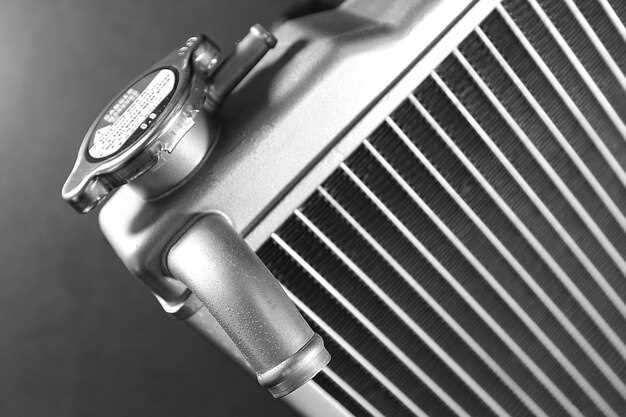
The exhaust produced by internal combustion engines plays a critical role in determining the environmental impact of automotive vehicles. Diesel and gasoline engines, while serving the same fundamental purpose of powering vehicles, produce markedly different exhaust components due to variations in their fuel types and combustion processes. Understanding these differences is essential for assessing vehicle emissions and improving engine technology.
Gasoline engines typically operate at higher RPMs and utilize a spark ignition system, leading to the production of gas that is rich in carbon monoxide and unburned hydrocarbons. In contrast, diesel engines function through compression ignition, resulting in a exhaust composition characterized by higher levels of nitrogen oxides (NOx) and particulate matter. This fundamental disparity highlights the need for targeted emission control strategies tailored to each engine type.
Furthermore, regulatory standards for exhaust emissions are becoming increasingly stringent, prompting manufacturers to innovate and develop cleaner technologies. As a result, understanding the specific components found in the exhaust of diesel and gasoline engines is crucial for both policymakers and consumers who are concerned about air quality and environmental sustainability.
Key Differences in Particulate Matter Emission

Particulate matter (PM) emission is a crucial factor in assessing the environmental impact of different types of engines, particularly diesel and gasoline engines. Diesel engines are known for producing higher levels of particulate matter compared to their gasoline counterparts. This is primarily due to the combustion process and the fuel characteristics inherent to diesel.
Diesel exhaust contains a significant amount of black carbon and other particulate matter, which results from incomplete combustion and higher combustion temperatures. The PM produced by diesel engines often consists of larger and more complex aggregates of soot particles. These particles can be detrimental to air quality and human health, contributing to respiratory problems and cardiovascular diseases.
On the other hand, gasoline engines typically generate lower levels of particulate matter. The combustion process in gasoline engines is usually more complete, resulting in fewer particulates. However, advancements in direct injection technology have led to increased PM emissions from some modern gasoline engines, which may produce ultrafine particles that can be harmful despite being emitted in smaller quantities compared to diesel engines.
The size and composition of particulate matter differ significantly between diesel and gasoline exhaust. Diesel PM is often larger and more diverse in chemical composition, while gasoline PM tends to be smaller and less complex. Understanding these differences is critical for developing effective emission control strategies and improving air quality.
In summary, the key differences in particulate matter emission between diesel and gasoline engines highlight the need for targeted regulations and technological innovations to minimize the environmental and health impacts of exhaust from both types of engines.
Impact of Fuel Composition on NOx and CO Emissions
The composition of fuel plays a critical role in determining the emissions produced by both diesel and gasoline engines. Diesel fuel predominantly consists of hydrocarbons with longer carbon chains, which leads to more efficient combustion at high temperatures and pressures. This results in a significant production of nitrogen oxides (NOx), a group of harmful gases formed during combustion. The higher combustion temperature in diesel engines is a key factor contributing to increased NOx emissions compared to gasoline engines.
In contrast, gasoline fuel has a higher volatility and typically contains shorter carbon chains. This facilitates easier ignition and combustion at lower temperatures. Consequently, gasoline engines produce lower NOx emissions but tend to generate higher levels of carbon monoxide (CO). The presence of oxygenates in gasoline, such as ethanol, can significantly affect CO emissions by promoting more complete combustion. This difference in fuel composition between diesel and gasoline fuels results in variances in exhaust emissions, reflecting the fundamental differences in the combustion process.
The additives present in both diesel and gasoline can also influence the composition of exhaust emissions. For instance, the use of biodiesel, a diesel fuel alternative made from renewable resources, can reduce CO emissions while potentially increasing NOx emissions due to higher combustion temperatures. Moreover, varying the sulfur content in diesel fuel directly impacts the formation of soot and other particulate matter, which can further influence the overall emissions profile of diesel engines.
Understanding the impact of fuel composition on NOx and CO emissions is crucial for developing strategies aimed at reducing air pollution and improving engine efficiency. Policymakers can utilize this knowledge to encourage the adoption of cleaner fuels and technologies that minimize harmful exhaust components, thereby contributing to better air quality and public health outcomes.
Real-World Performance of Diesel vs. Gasoline Exhaust Catalysts

The real-world performance of exhaust catalysts in diesel and gasoline engines reveals significant differences in their efficiency and composition. Both types of engines produce harmful emissions, but the characteristics of their exhaust gases vary, necessitating distinct catalytic converter technologies.
Diesel engines typically operate at higher temperatures and pressures, generating exhaust that contains larger amounts of nitrogen oxides (NOx) and particulate matter. The catalysts used in diesel applications, such as Selective Catalytic Reduction (SCR) and Diesel Particulate Filters (DPFs), are designed to address these specific emissions. SCR systems utilize a urea-based additive to convert NOx into harmless nitrogen and water vapor, proving effective in reducing emissions when properly maintained. Meanwhile, DPFs capture soot particles and must undergo periodic regeneration to maintain efficiency.
In contrast, gasoline engines generally produce exhaust that is rich in carbon monoxide (CO) and unburnt hydrocarbons (HC). The catalysts employed in these systems often use three-way catalysts (TWCs), which simultaneously convert CO, NOx, and HC into less harmful substances like carbon dioxide (CO2) and nitrogen. The efficiency of TWCs can significantly vary based on engine tuning and fuel quality, impacting overall performance.
Real-world performance tests reveal that diesel exhaust catalysts are often more robust, handling the extreme conditions typical of diesel operations. However, this durability comes at a cost, as maintenance requirements for diesel systems can be more stringent due to the buildup of soot and the need for urea replenishment. On the other hand, gasoline exhaust catalysts are typically lighter, providing quicker light-off capabilities but may require more frequent replacement due to their vulnerability to poisoning from contaminants in the fuel.
Ultimately, the choice between diesel and gasoline exhaust catalysts depends on the specific application and environmental regulations. Both systems have their advantages and drawbacks, highlighting the importance of proper maintenance and technology selection to optimize exhaust performance and minimize harmful gas emissions.
